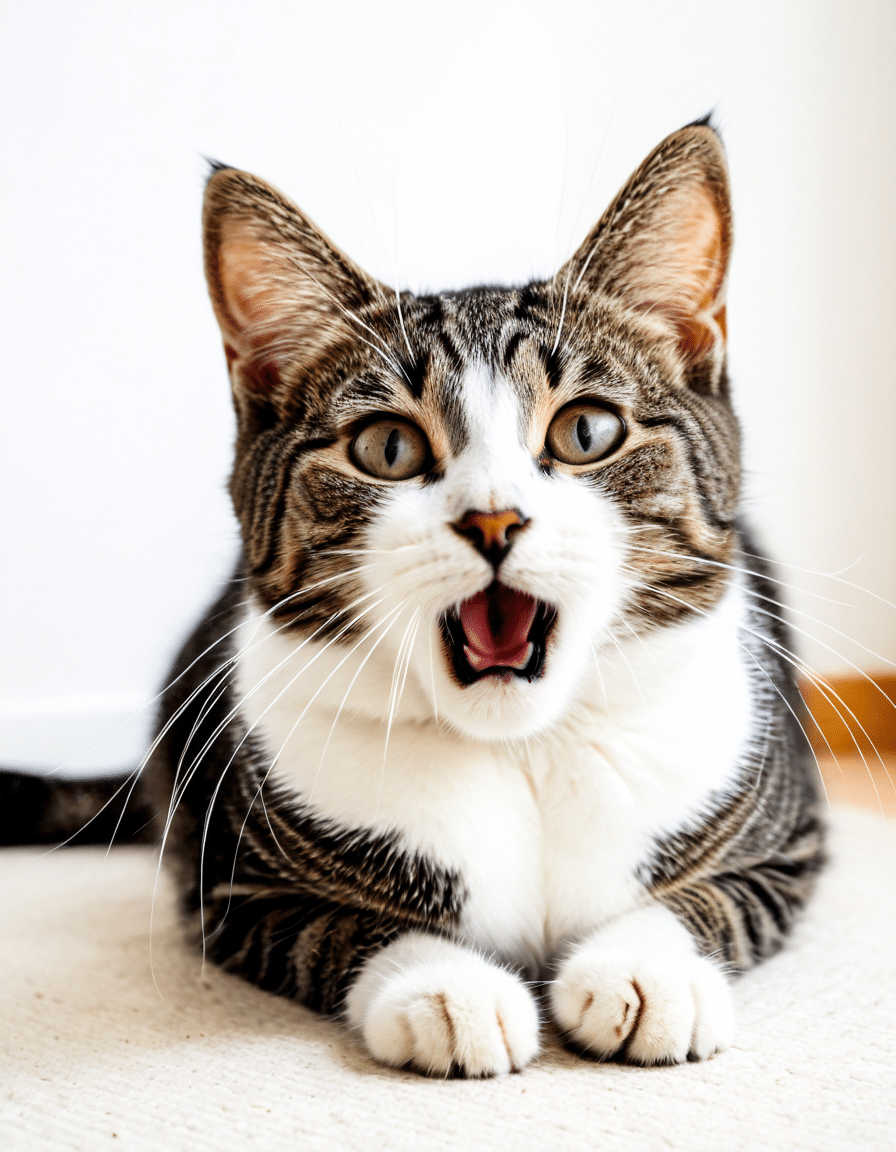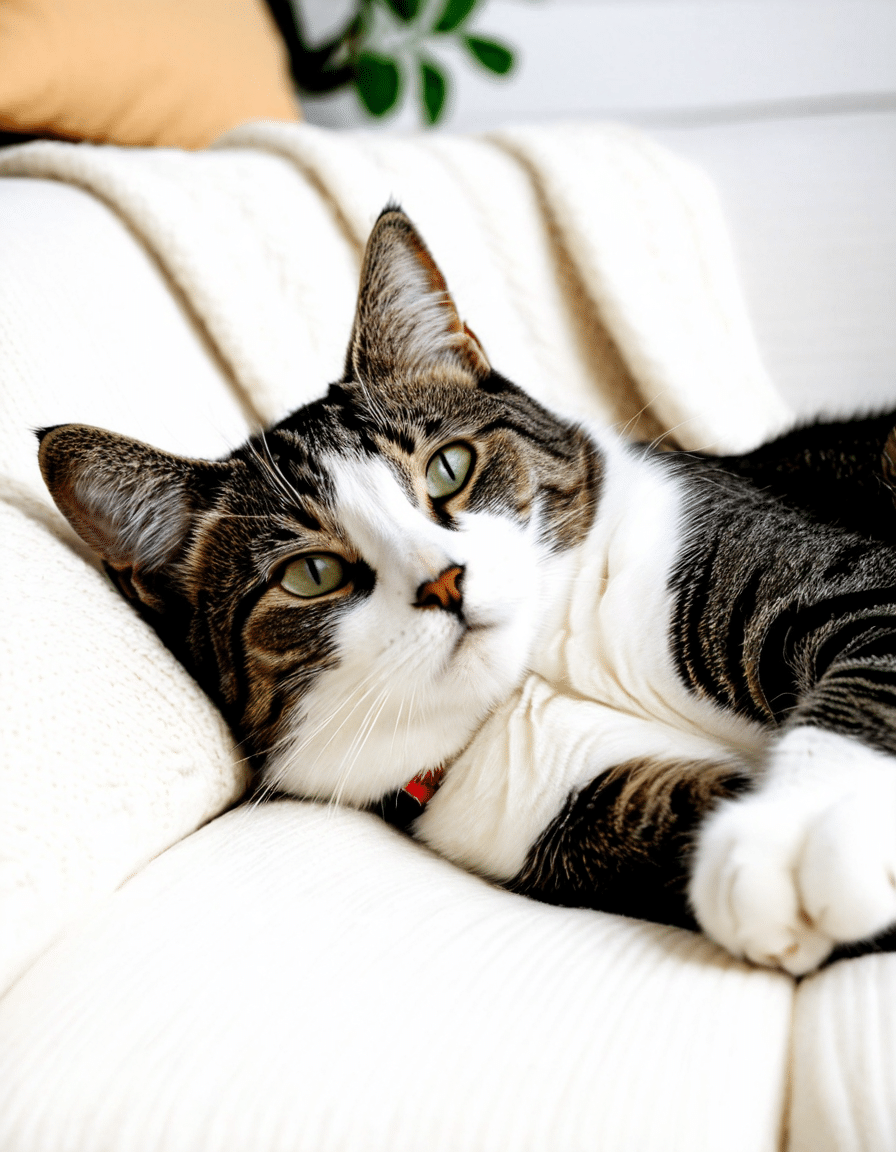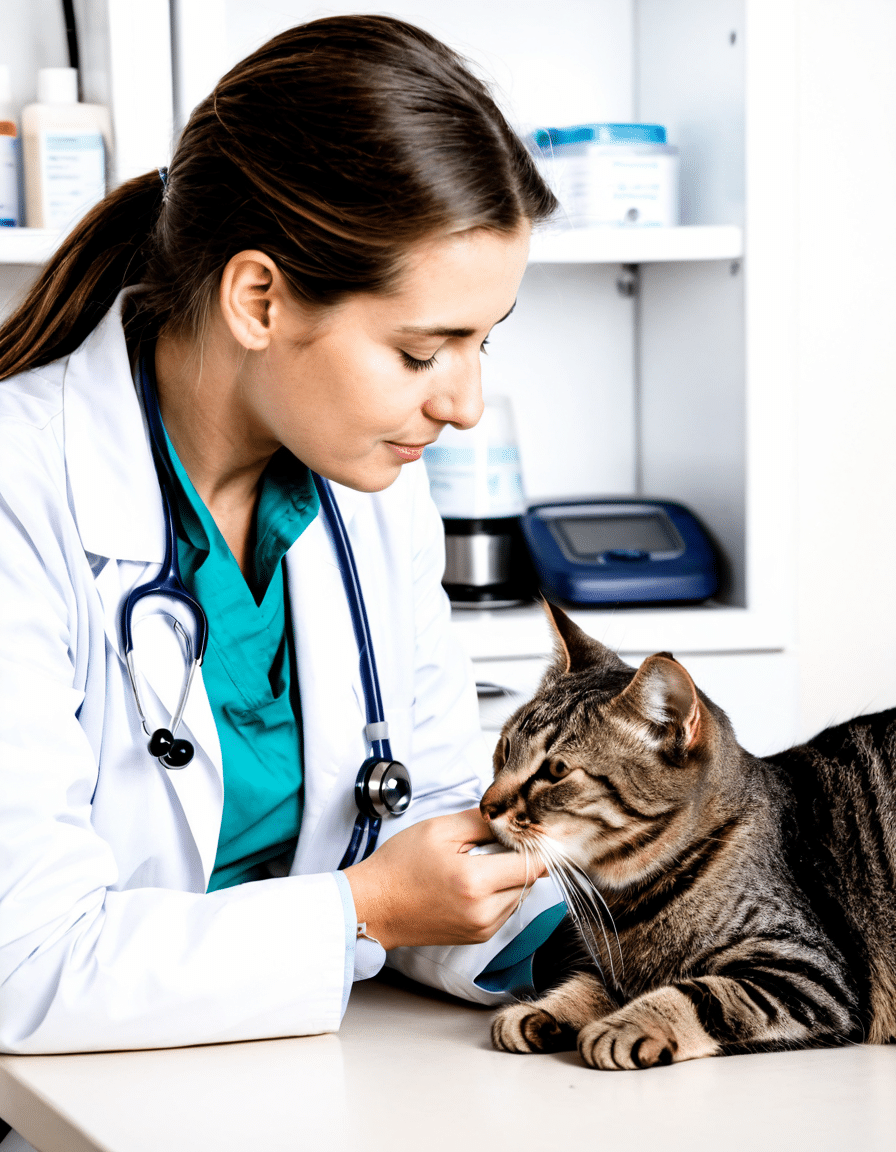Rapid breathing in cats, also known as tachypnea, can send any pet owner into a state of panic. This condition diverges sharply from the normal, relaxed breaths we expect from our furry friends. Understanding rapid breathing in cats is essential for every cat parent, whether you’re realizing your companion is panting after a chase or if you notice heavy breathing while they’re simply lounging. Knowing what causes this change in breathing can help you determine when to act and how to provide the best care for your feline friend.
Understanding Rapid Breathing in Cats: Causes and Concerns
When it comes to rapid breathing in cats, numerous factors could be at play. It’s not just about panic; there are physiological reasons, health concerns, and even food-related issues to consider. Here’s a breakdown of the various causes behind rapid breathing in cats.
Cats, like any athlete, may exhibit rapid breathing during moments of excitement or physical exertion. Just imagine your cat zooming around the house or engaged in a fierce play session with their favorite feather toy. In this scenario, rapid breaths are entirely normal and should return to their baseline once they calm down. Always check the context—is your cat just relaxing, or did they recently dart around the house like a bat out of hell?
If you see your cat breathing quickly and struggling to catch their breath, it could indicate serious respiratory issues. Conditions like feline asthma, pneumonia, or more severe lung diseases can contribute to rapid breathing. Feline asthma, in particular, may cause wheezing and discomfort; it’s crucial to seek veterinary guidance. Early diagnosis can lead to effective treatment and happier days for your kitty.
A heart murmur in cats can play a significant role in abnormal breathing rates. This condition, often first detected during routine vet visits, may stem from serious heart diseases that require immediate attention. Don’t brush off consistent heavy breathing as just “getting old.” If your cat has a diagnosed murmur, keeping an eye on their breathing is vital.
Rapid breathing in cats can also signal pain or anxiety. Cats are masters at hiding discomfort, but if your feline seems agitated, restless, or refuses to eat, they might be in trouble. Look for signs like excessive grooming or hiding, which can indicate underlying pain. Dental issues and arthritis are common culprits, which might require proper treatment to ease their struggles.
Some cats may exhibit rapid breathing or even seem to sob after meals. This could result from esophageal inflammation or dietary intolerances. If your cat consistently shows signs of distress after eating, don’t ignore it. Consult with your veterinarian to rule out any serious digestive issues or food allergies affecting your furry friend.
Cats often struggle with heatstroke, especially in sweltering climates or during hot summer days. Rapid breathing can be one of the initial signs of overheating, so keeping your kitty hydrated and indoors when the temperature soars is vital. Watch for other symptoms, like drooling or lethargy, which may signal that an emergency is on the horizon!
Sometimes, engaging with a heart beating toy, like the SmartPetLove Snuggle Kitty, can soothe a nervous cat. However, be mindful—overexcitement from play can also lead to temporary rapid breathing. You want to strike a balance; keep play sessions fun but manageable.

Monitoring Your Cat’s Breathing: When to Seek Help
Observation is key! Take note of your cat’s breathing patterns, and pay attention to any accompanying symptoms like lethargy, coughing, or changes in appetite. If the rapid breathing in cats becomes a consistent occurrence, you need to consult your veterinarian promptly. They may recommend diagnostic tests—think X-rays or blood panels—to get to the root of the issue.
Preventing Rapid Breathing: Proactive Measures
Prevention is often easier than treatment. Keeping your cat in tip-top shape will significantly reduce the chances of rapid breathing episodes. Regular veterinary check-ups help catch heart murmurs or respiratory conditions early on. Plus, creating a stress-free home environment, managing your cat’s weight, and serving a balanced diet can contribute to their overall health.
Consider high-quality foods like Royal Canin and Hill’s Science Diet; they cater to different health needs and keep your feline energized and content. Maintaining an optimal weight and offering plenty of fresh water also factors into keeping your kitty healthy and happy.

A Feline in Tune with Its Body
Every little beat and breath speaks volumes about your cat’s well-being. Being attuned to the nuances of rapid breathing in cats, alongside observing other symptoms, empowers you as a pet parent. By understanding potential causes and maintaining a proactive mindset, you cultivate an environment where your cat can truly thrive. Ultimately, your attentive care is crucial; it can make the difference between a peaceful day at home and a sudden race to the vet due to a medical emergency.
When it comes to caring for your furry friend’s health, knowledge is power. So, be vigilant, stay informed, and ensure your darling feline enjoys a long, happy life by your side!
Rapid Breathing in Cats: Fun Trivia and Interesting Facts
When you’re checking in on your furry friend, you might notice that rapid breathing in cats can sometimes be a little puzzling. Did you know that, just like different dog breeds come in various colors, feline behavior can also vary widely based on their breed, age, and health? Understanding these nuances helps you recognize when a little panting is just your cat being playful or a sign of something more serious. Cats have a unique way of communicating, often with their body language and breathing patterns, much like how a black And tan German shepherd might express its emotions through its stance and tail.
As curious pet parents, we often want to know what our pets are up to—and that includes knowing what normal breathing looks like. Interestingly, the average resting respiratory rate for a cat is around 20 to 30 breaths per minute. However, when faced with stress or excitement, their rate can double or even triple! Speaking of speed, did you know that the fastest racehorse in The world can reach incredible speeds? It’s fascinating how both cats and horses have evolved their instincts to handle various situations, even if they express stress differently.
But back to cats—if you ever wonder why your feline companion is breathing rapidly, it could just be their way of adapting to new scenarios, especially if they’re nervous or feeling unwell. On that note, it’s essential for every pet owner to gauge their pet’s behavior and body language, just like you’d keep tabs on whether your dog’s urine is acidic or alkaline. You might have even seen a cat exhibit rapid breathing in a situation that reminds you of classic films like How To Be Single, where characters display their feelings in exaggerated ways.
Lastly, while talking about the importance of pet care, don’t forget to provide your kitty with a safe and comfortable space. This helps alleviate instances of rapid breathing in cats. Just like listening to your favorite tunes through a Bose wireless sound bar can calm you down after a long day, a cozy environment can work wonders for your cat. So, the next time you see your furry pal breathing fast, think of it as your chance to step in and provide the love they need!



